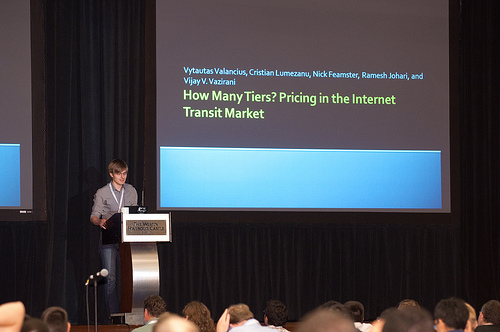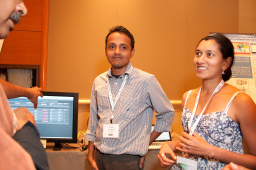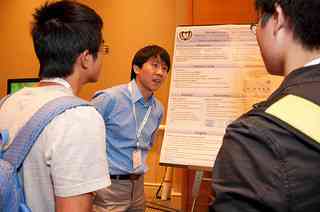Ph.D. student Valas Valancius has been developing the Transit Portal, software that gives services hosted on cloud infrastructures like Amazon EC2 direct control over inbound and outbound traffic. Different services may have different service requirements: some services may require connectivity that satisfies strict performance requirements (e.g., interactive services or gaming may require low latency or packet loss), while other services might wish to simply use the least expensive connectivity. Unfortunately, today's cloud providers select the same routes for every service hosted on the cloud infrastructure (effectively doing "one size fits all" routing for all hosted services).
The Transit Portal allows each service hosted in a cloud to perform its own Internet routing. For more information on Transit Portal, see the full paper, or check out the following articles:
Professor Nick Feamster also blogged about the Transit Portal here. Lots of information about Transit Portal, including information about how to install a Transit Portal yourself, is available on the GENI project wiki for Transit Portal.











